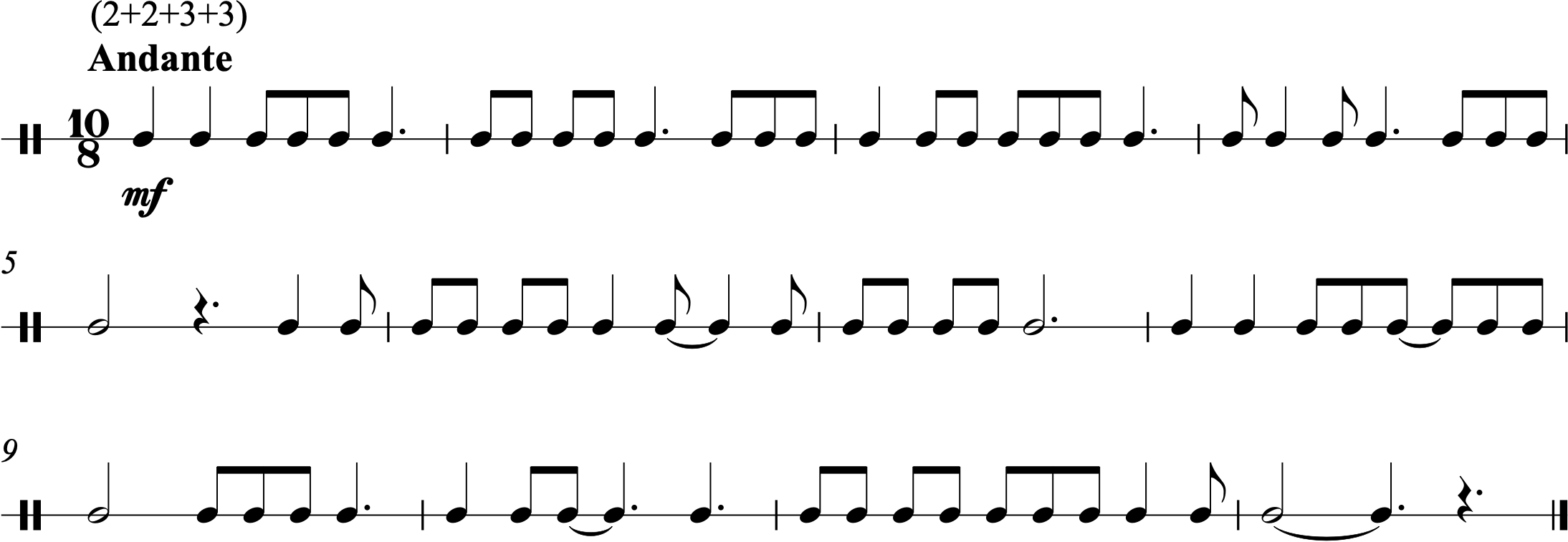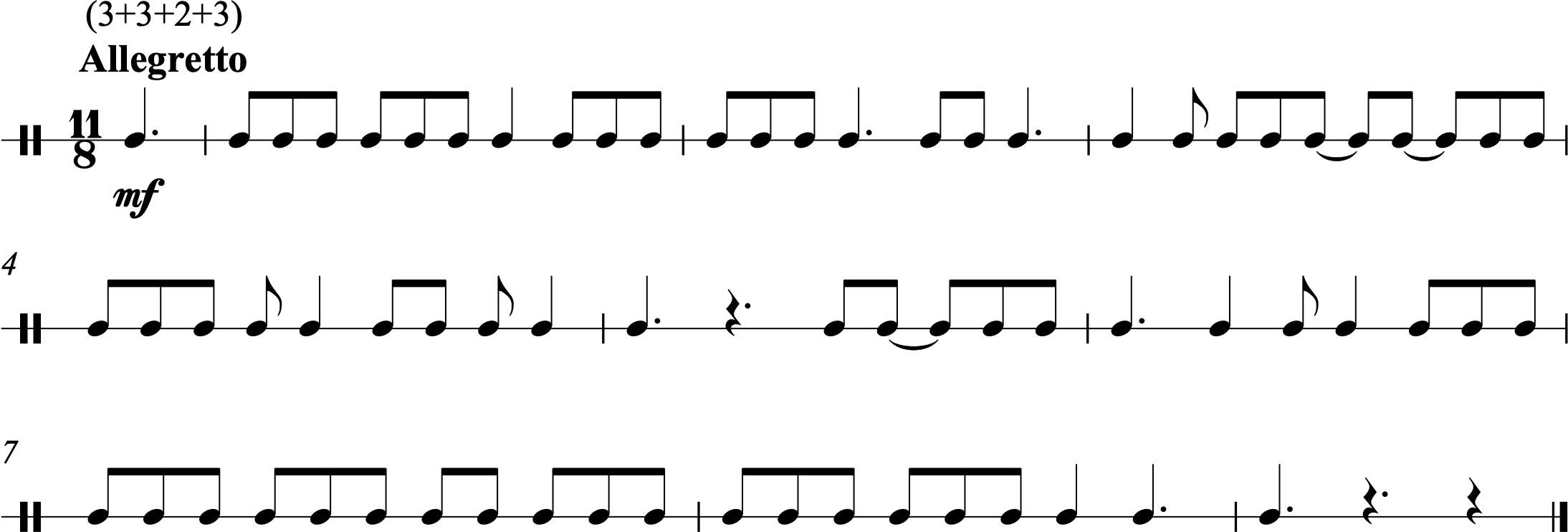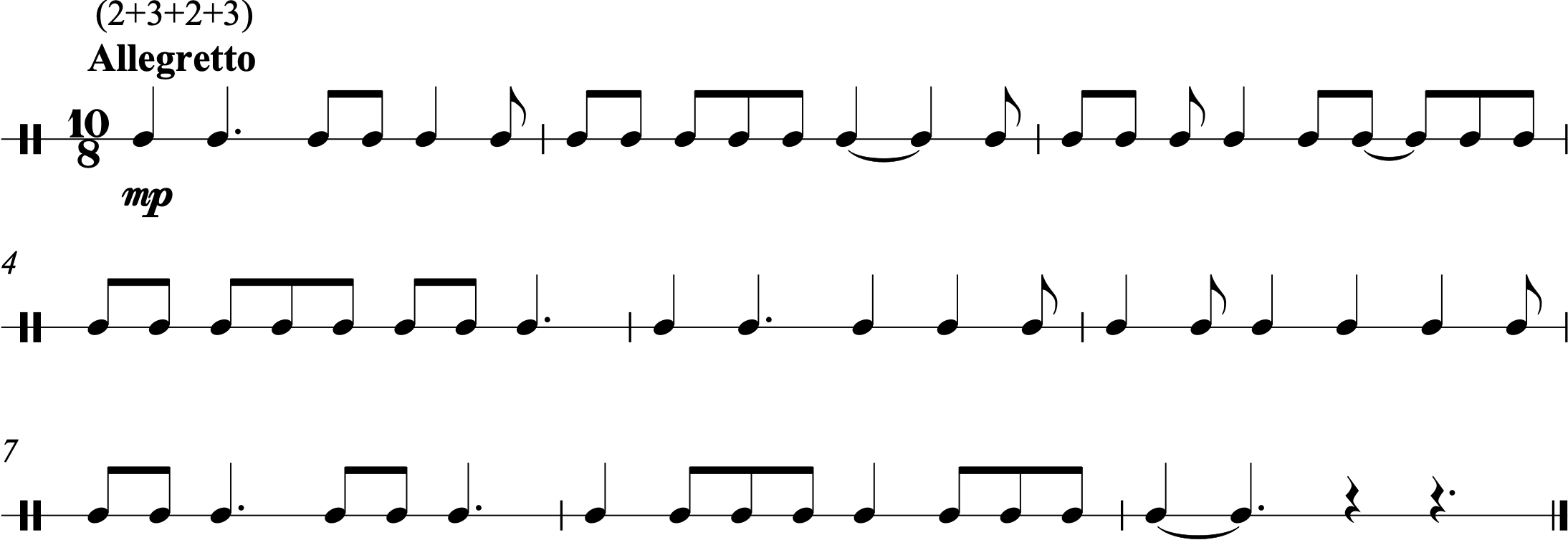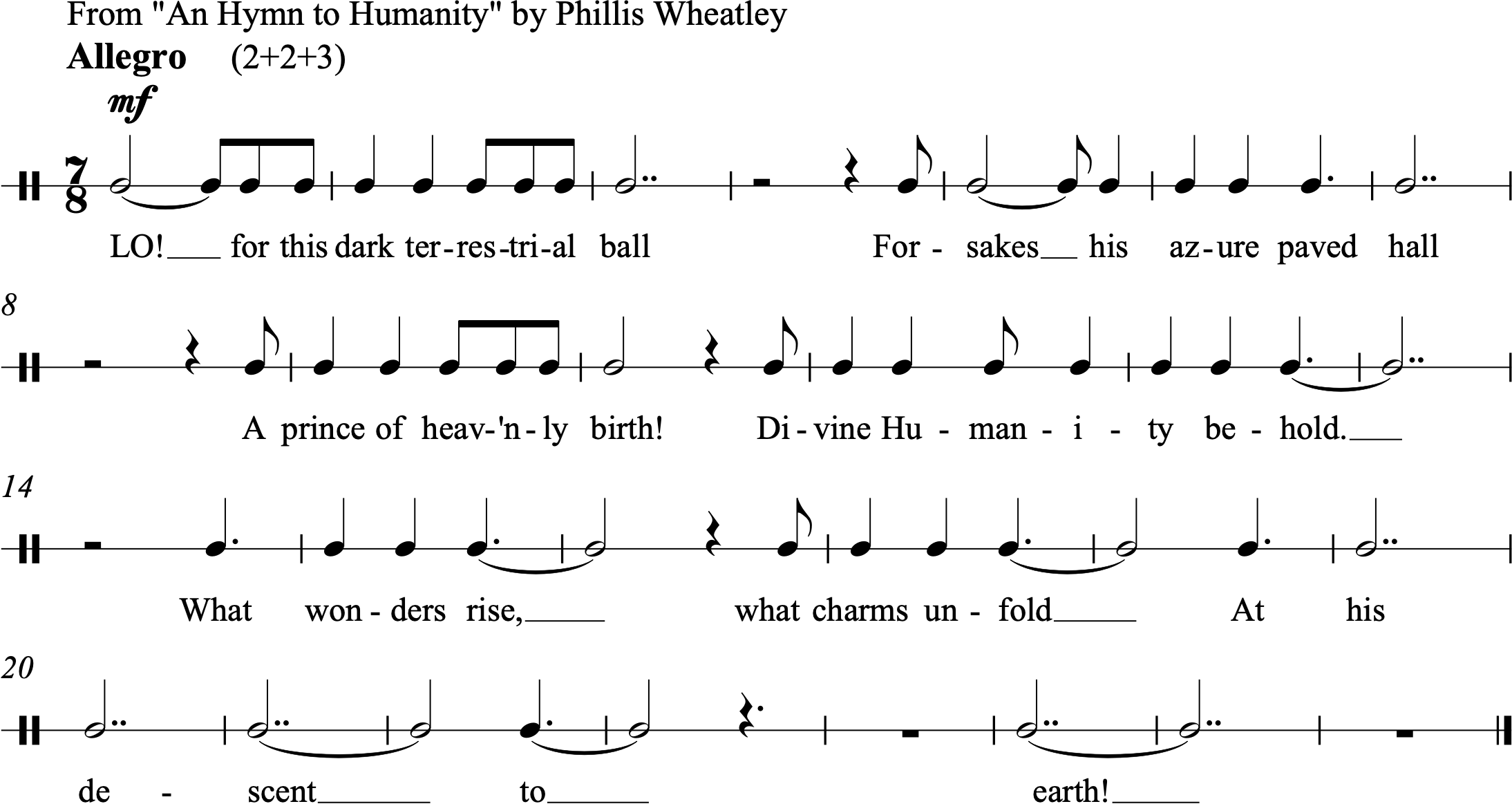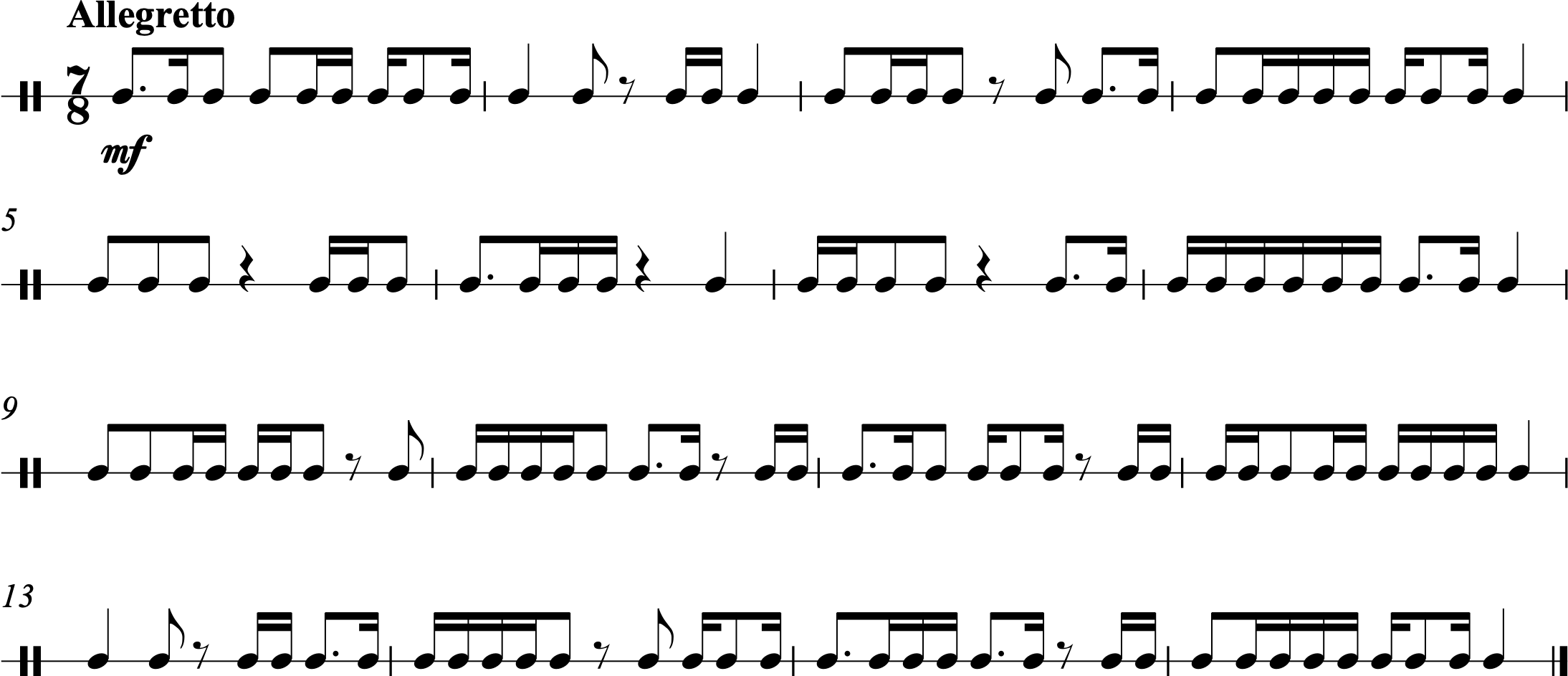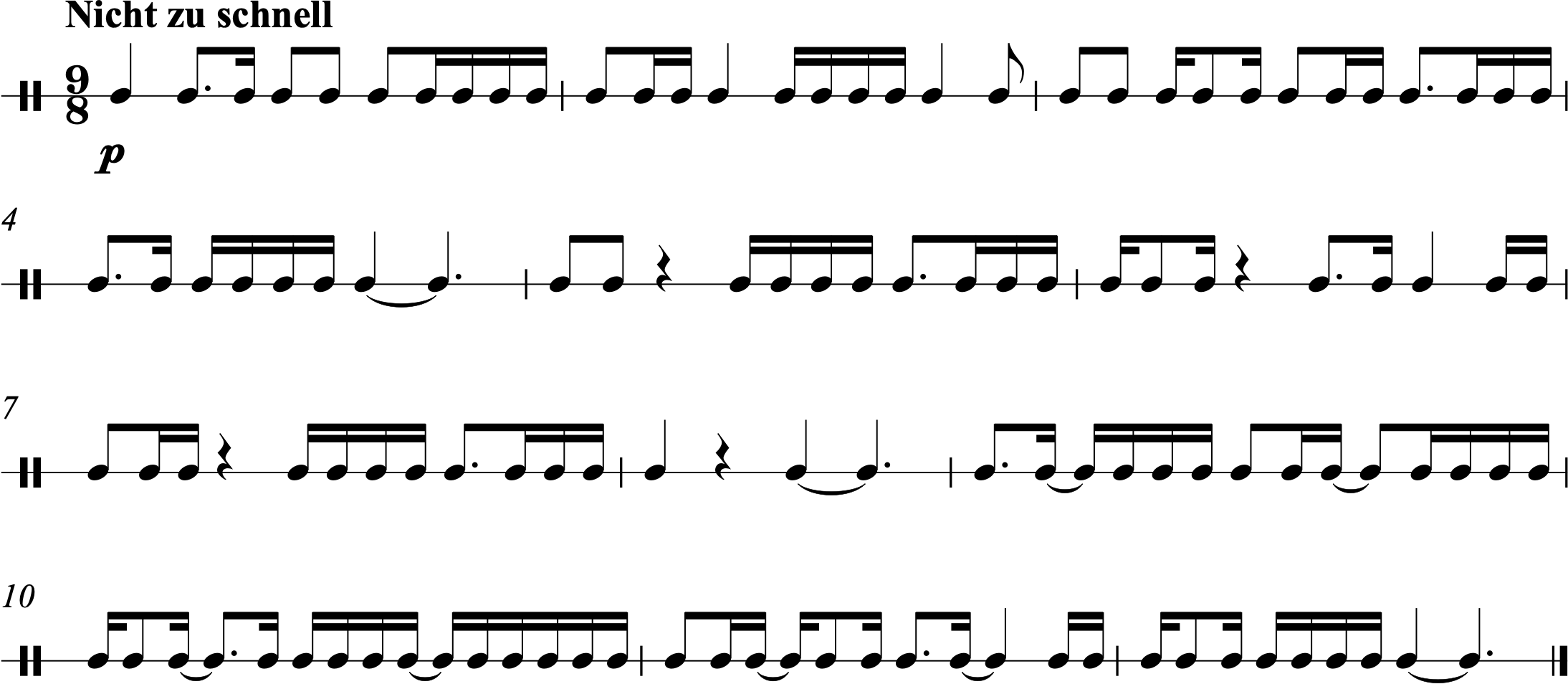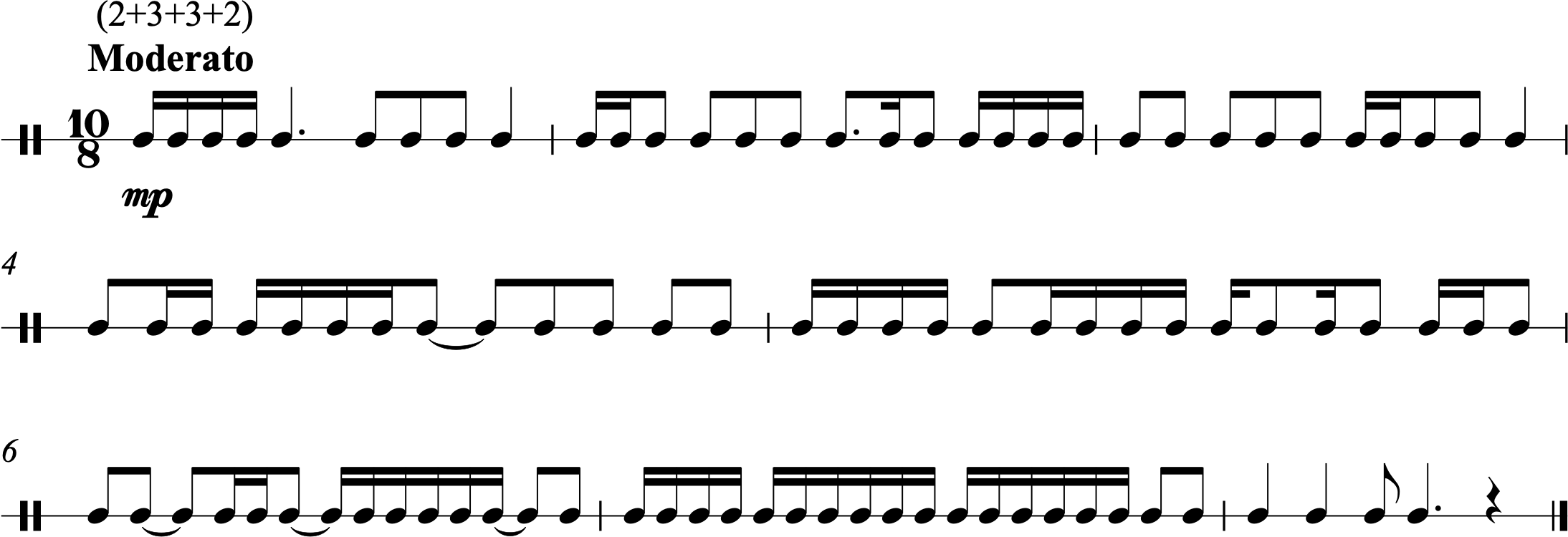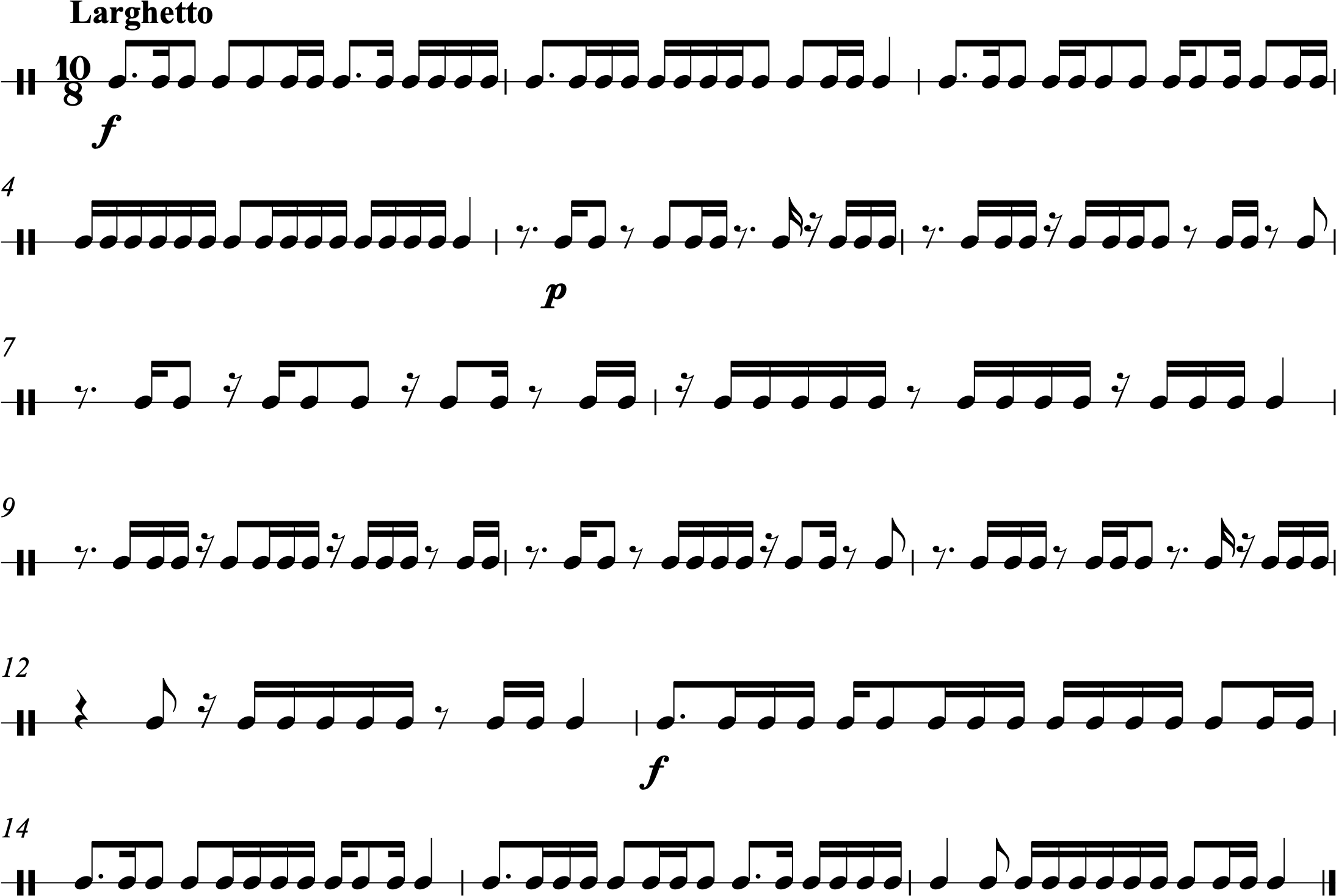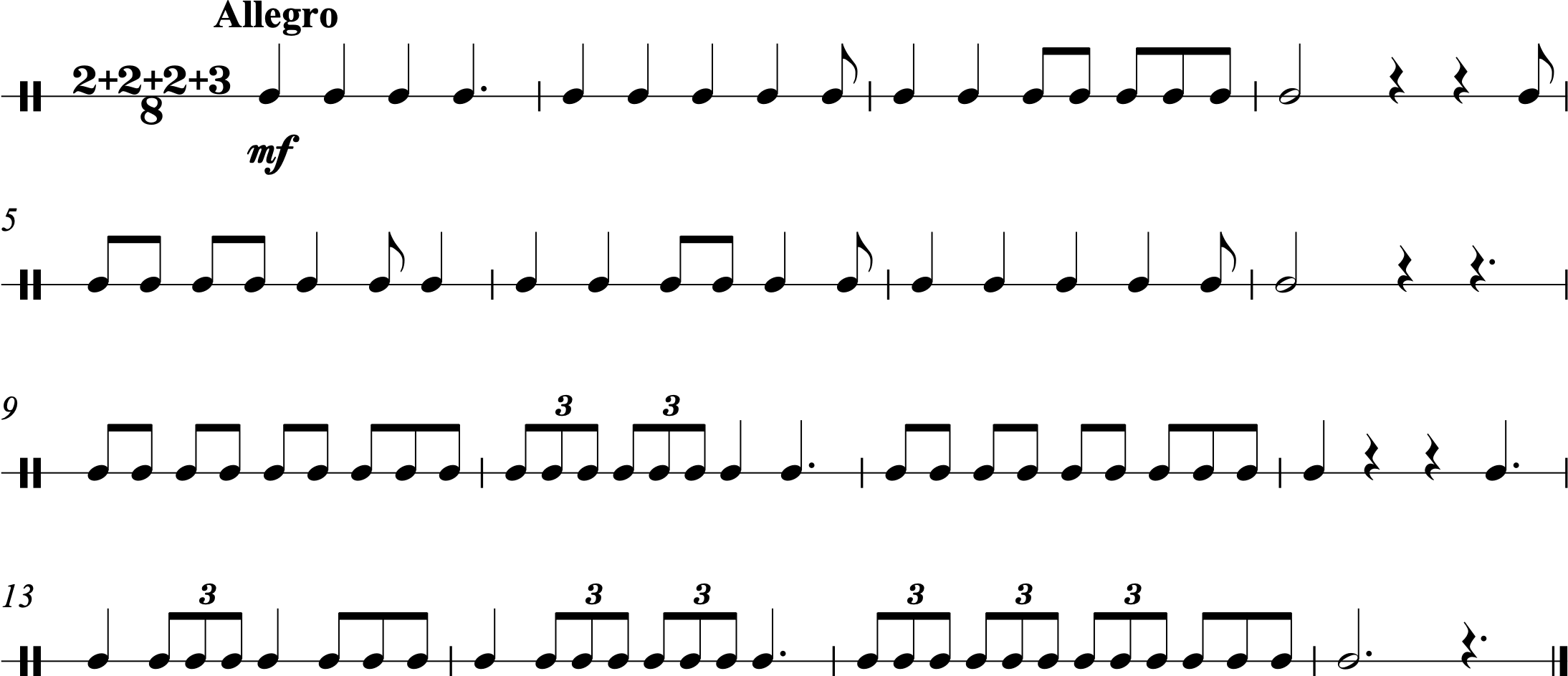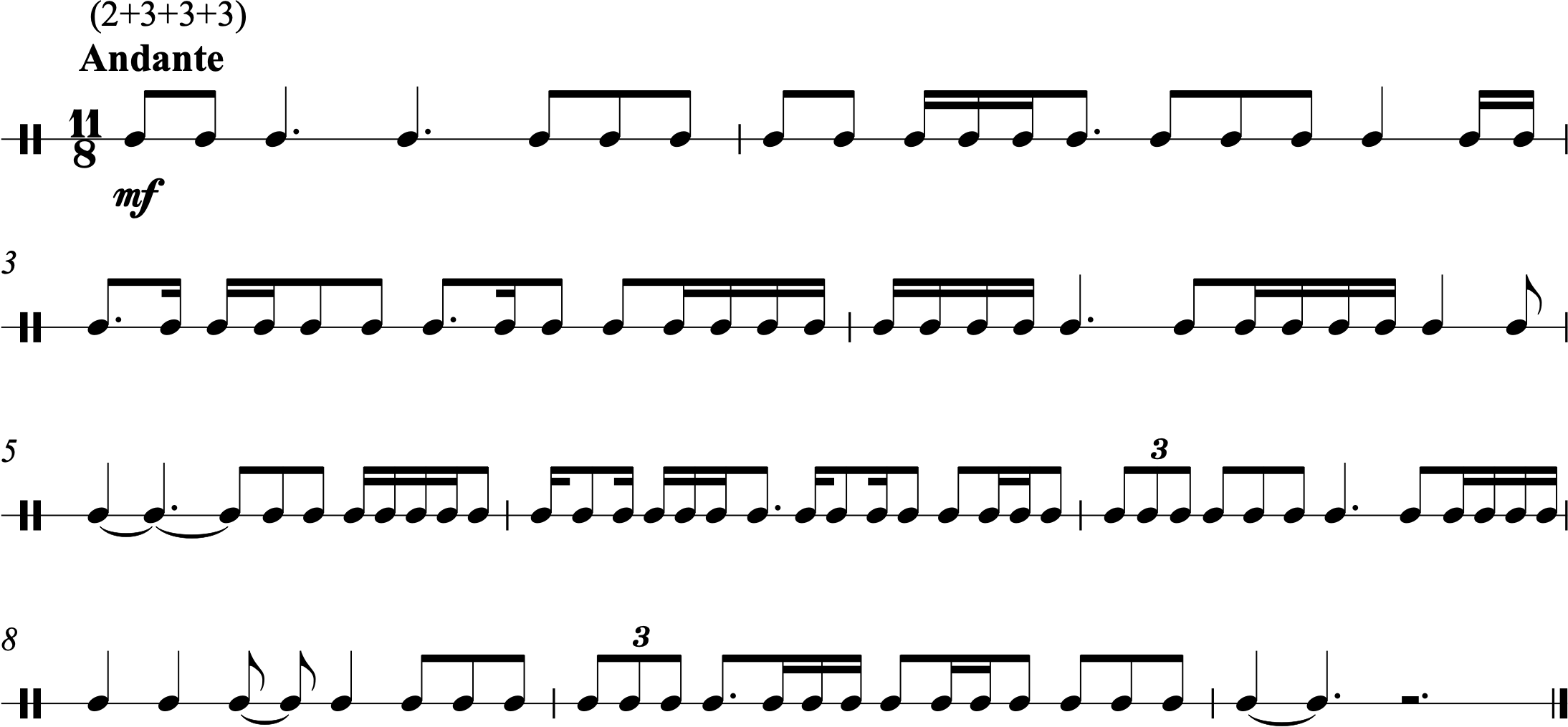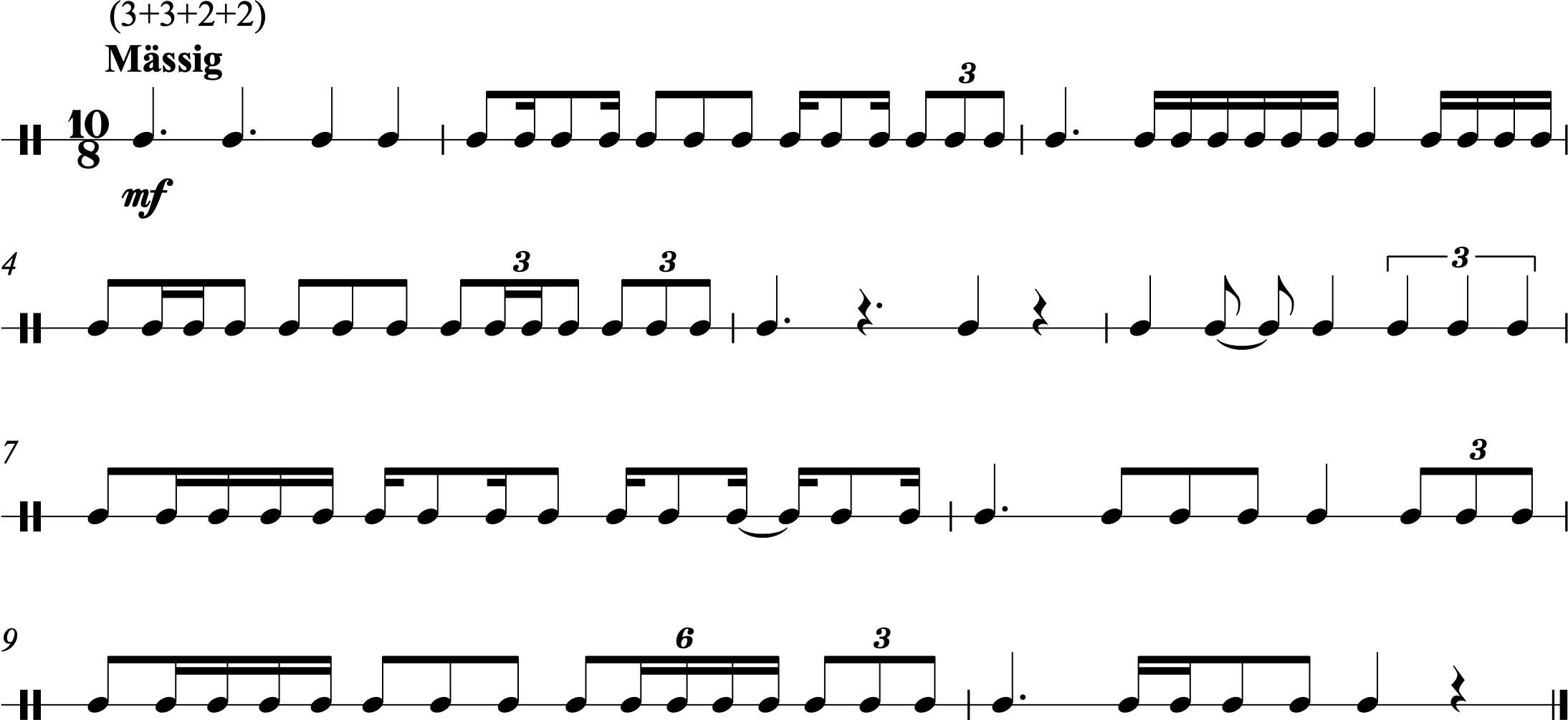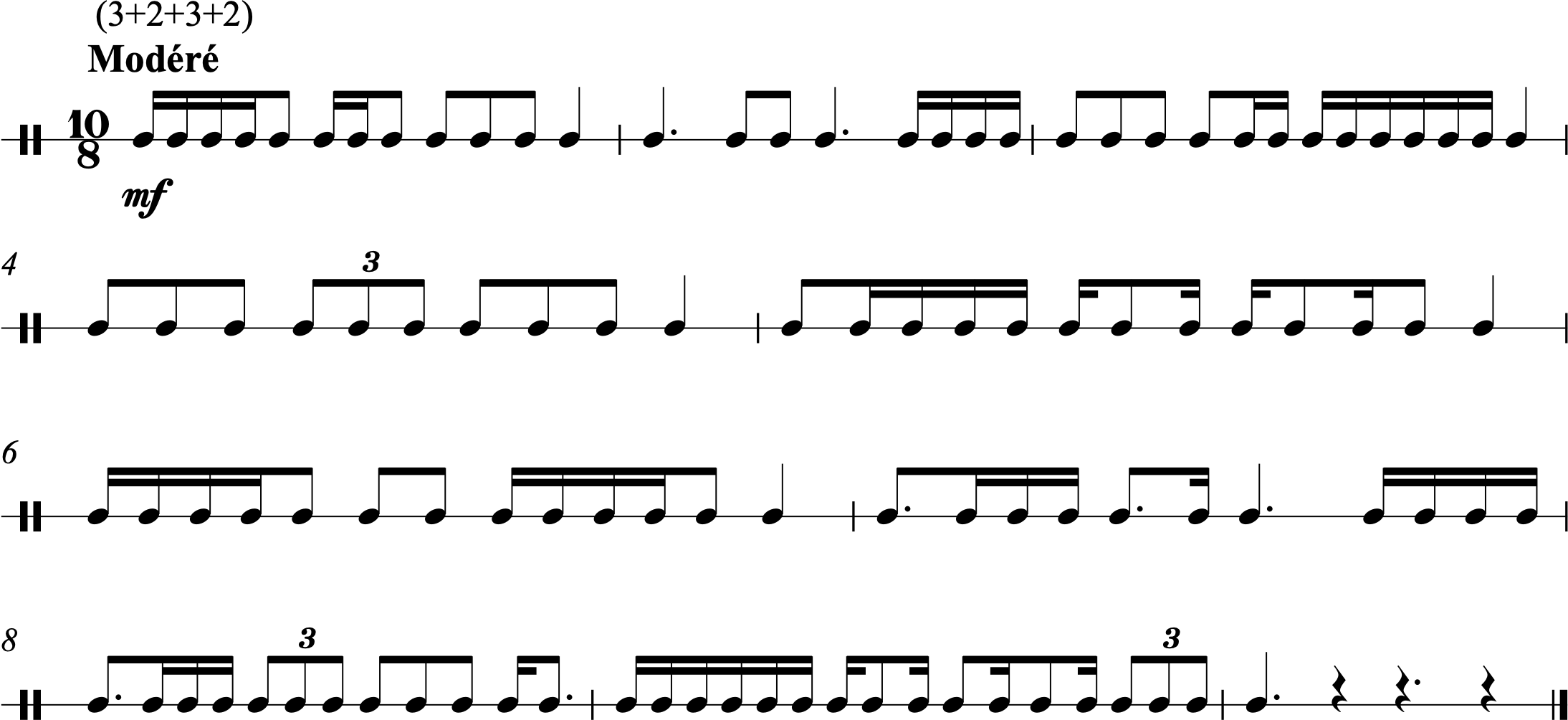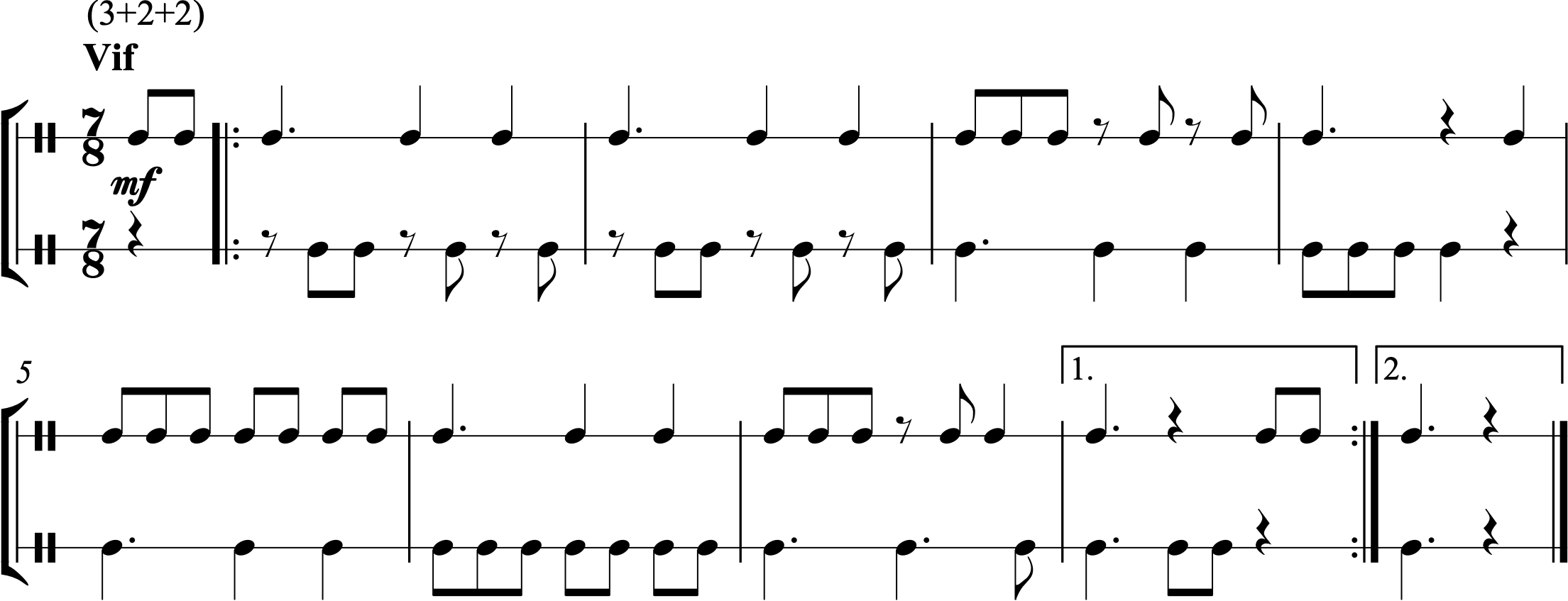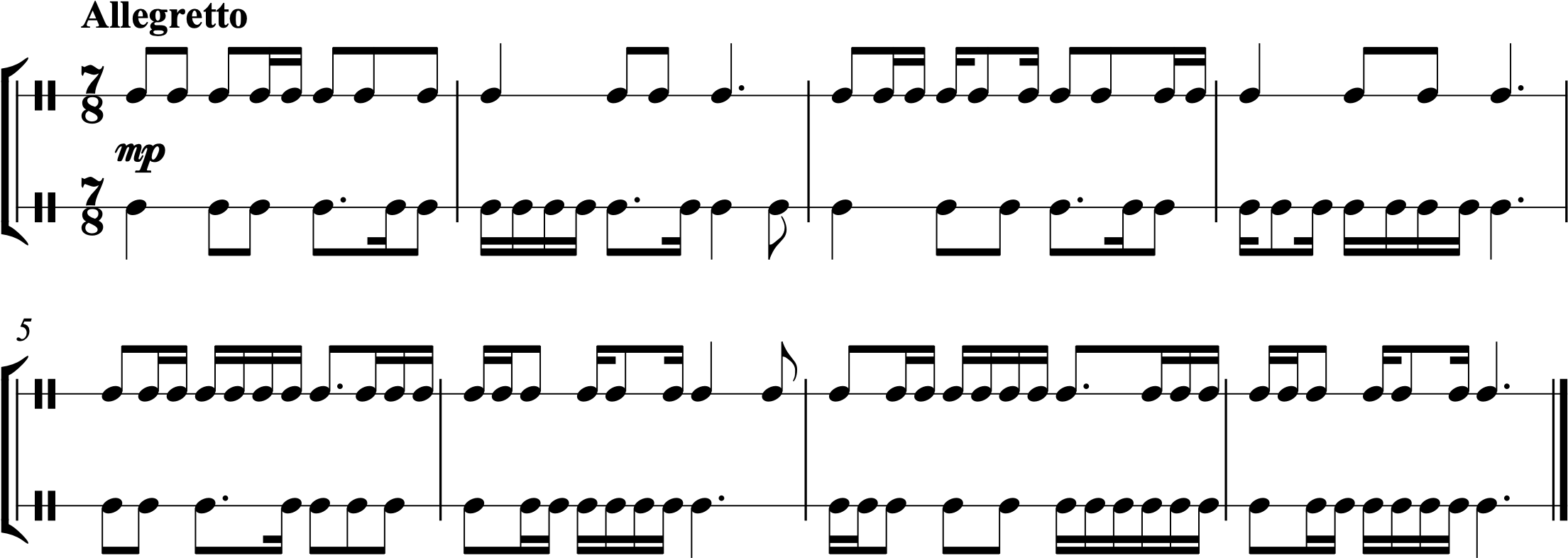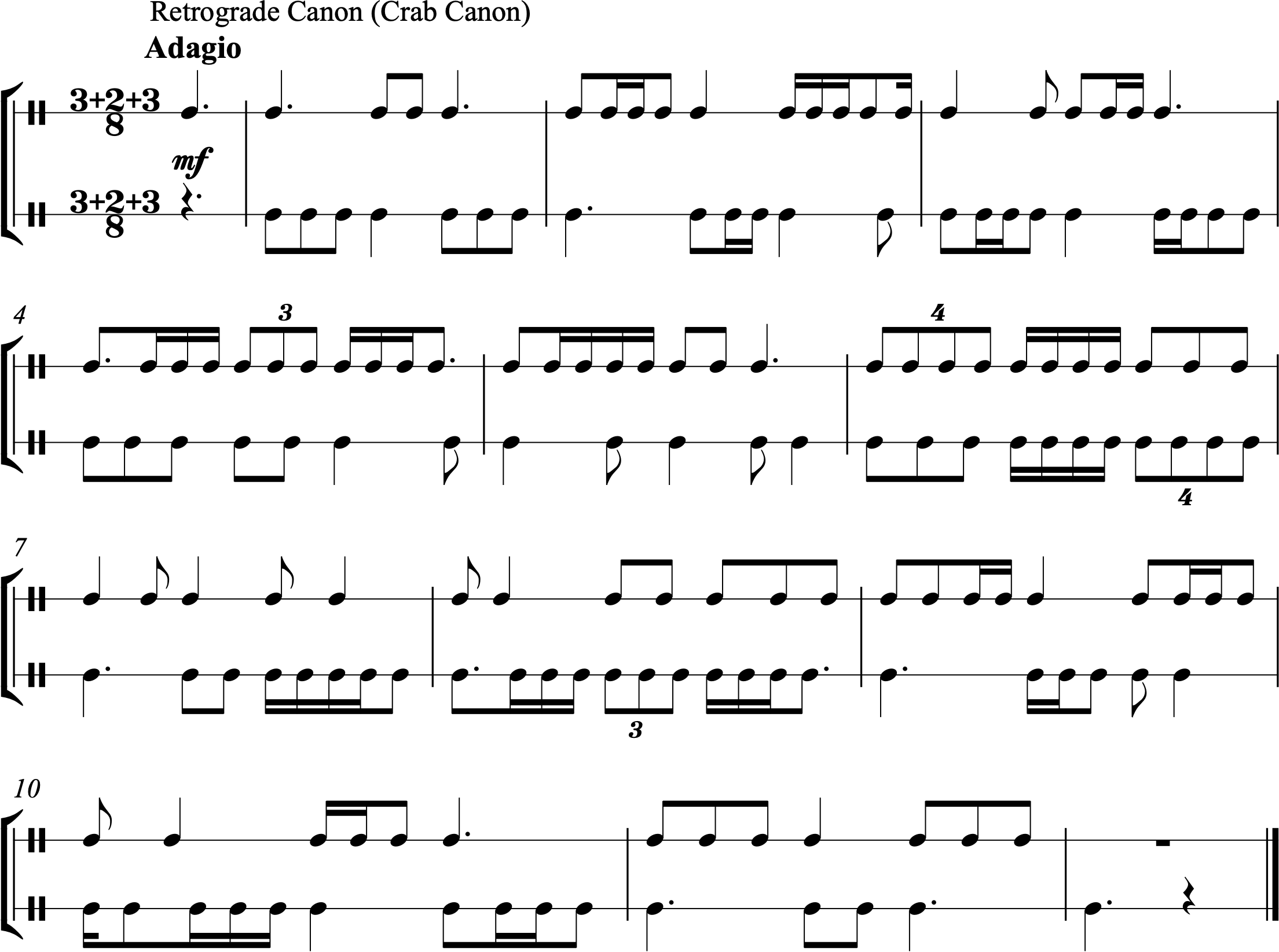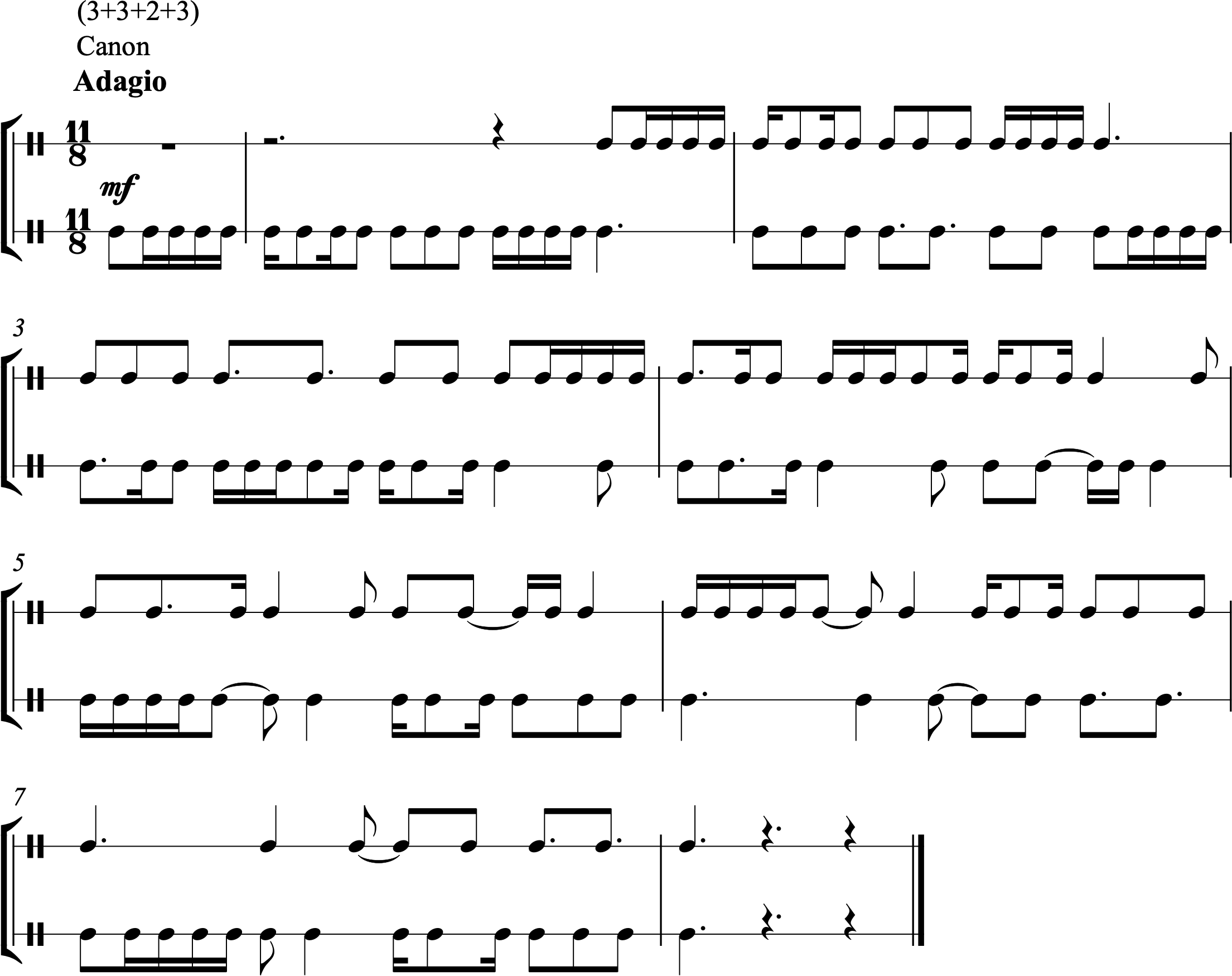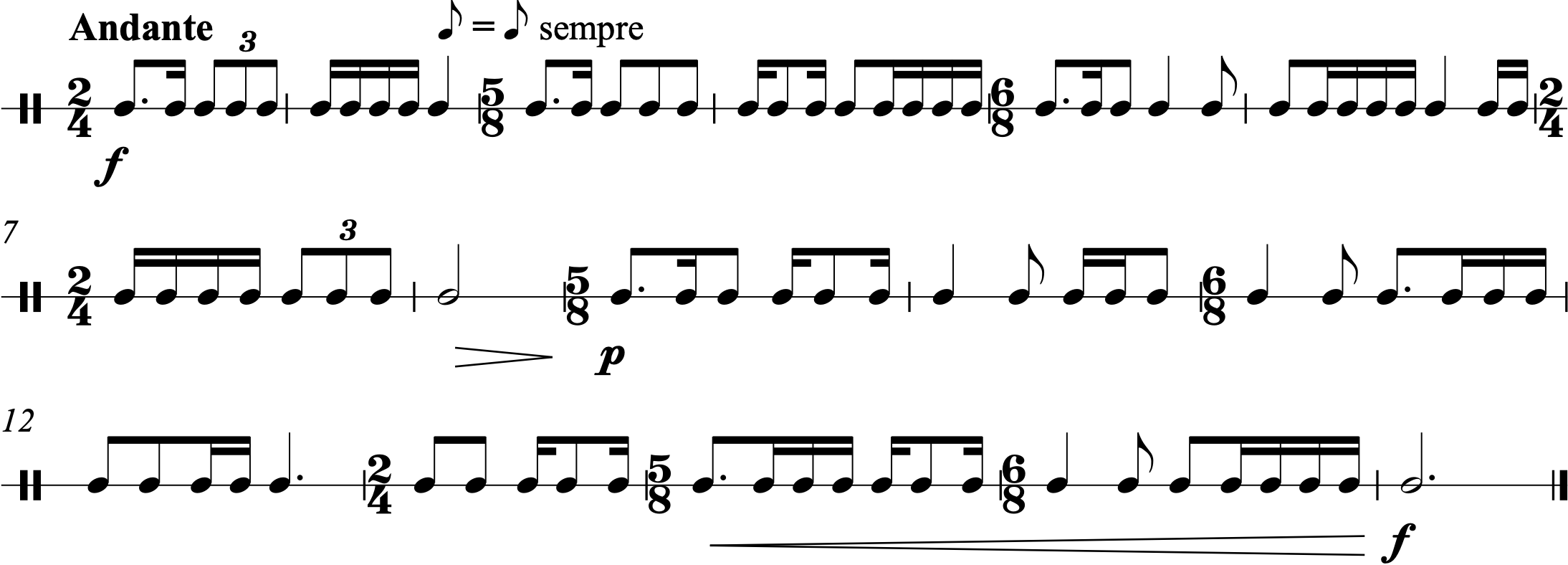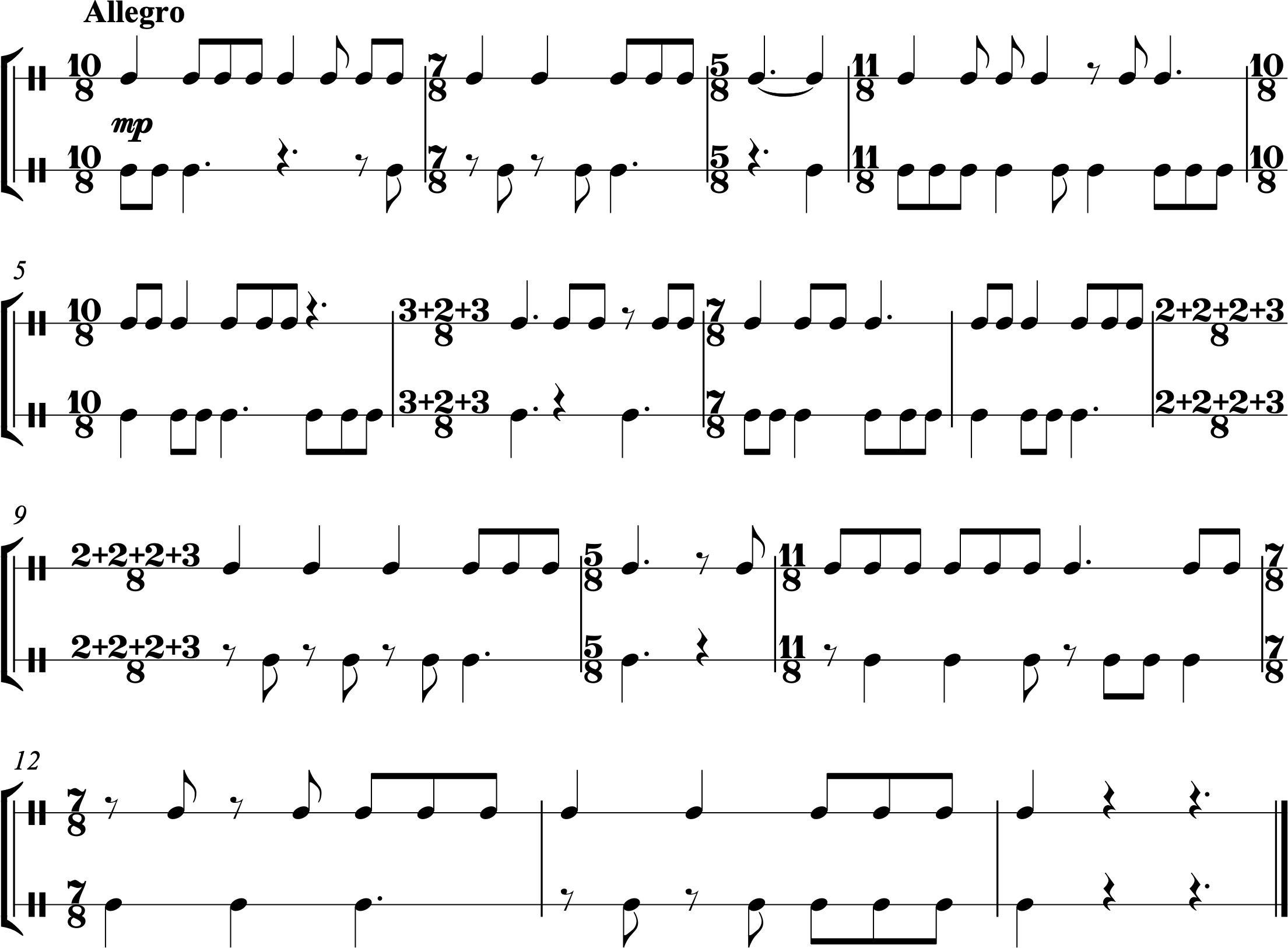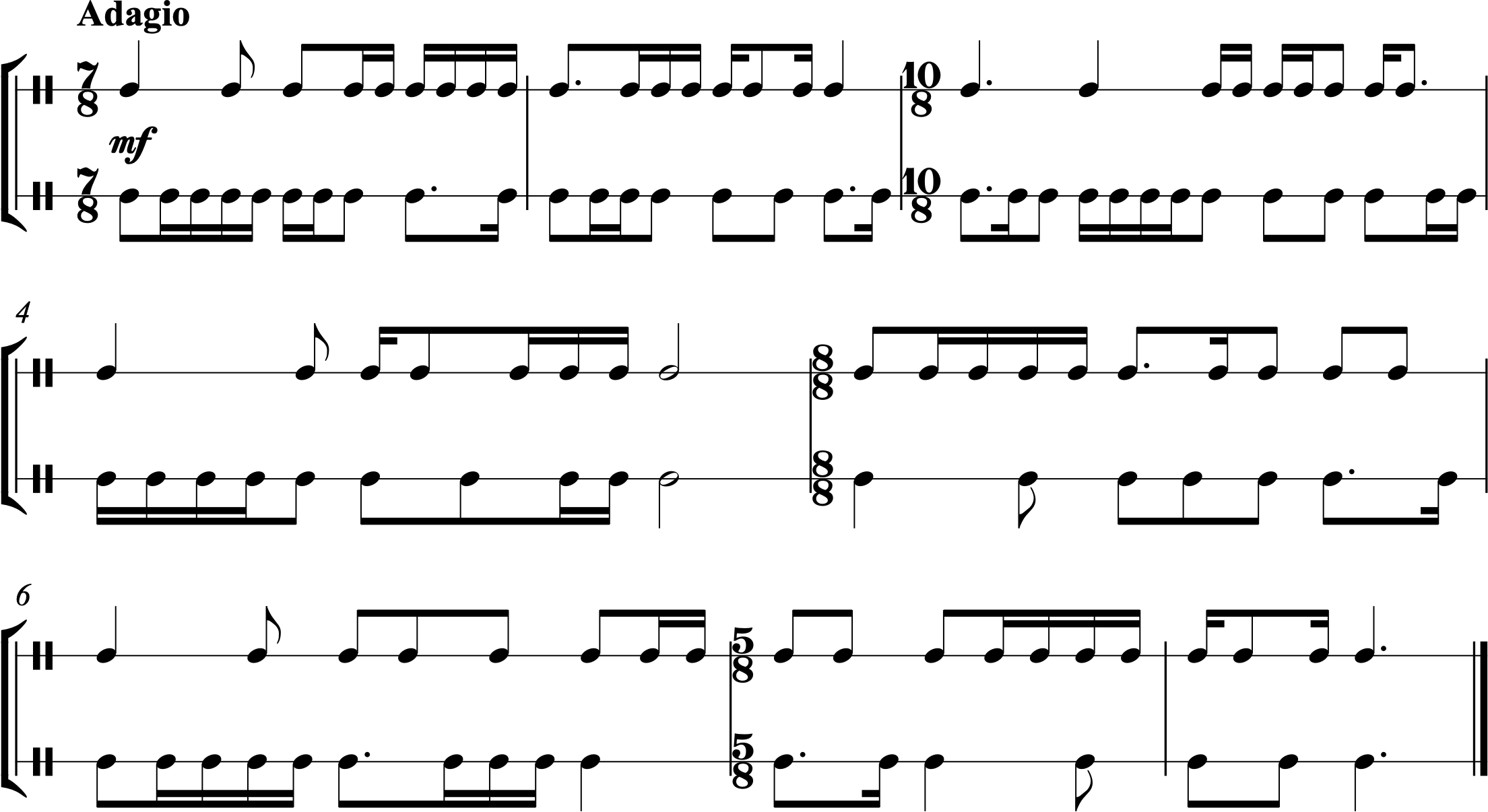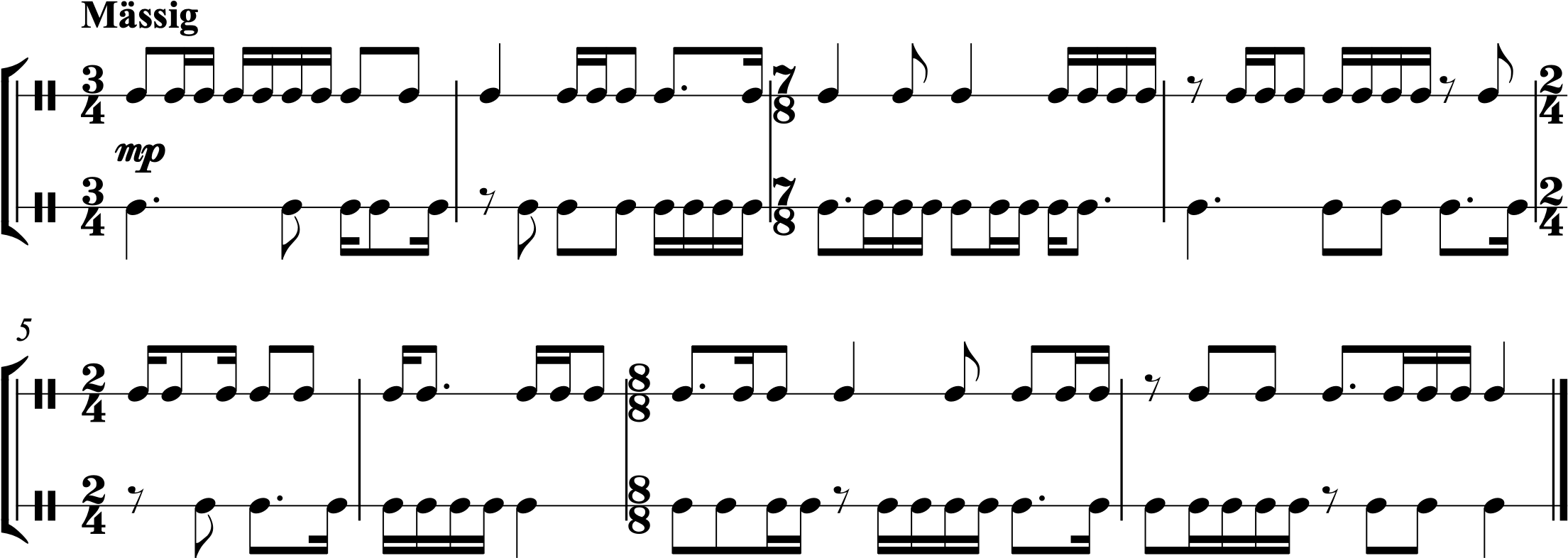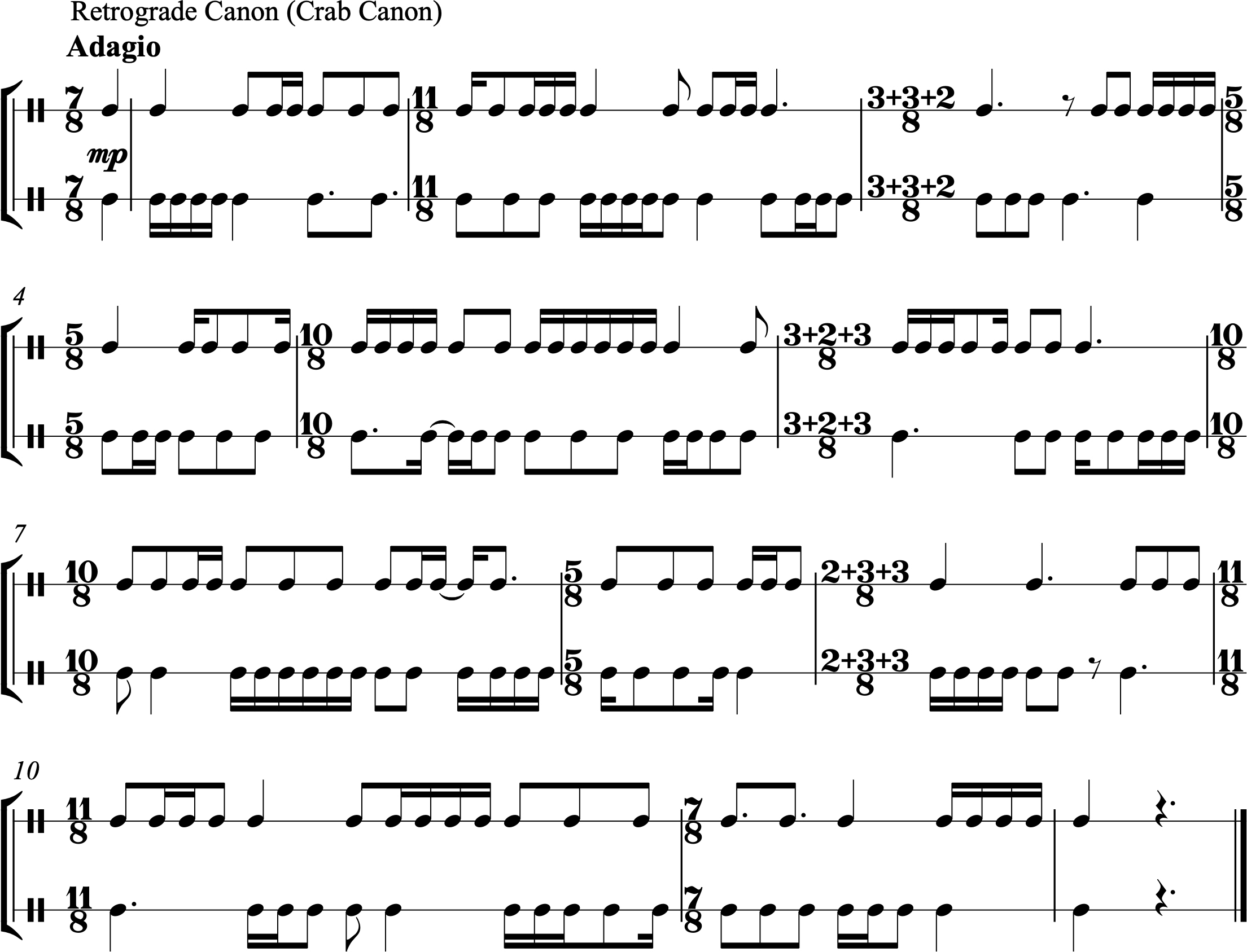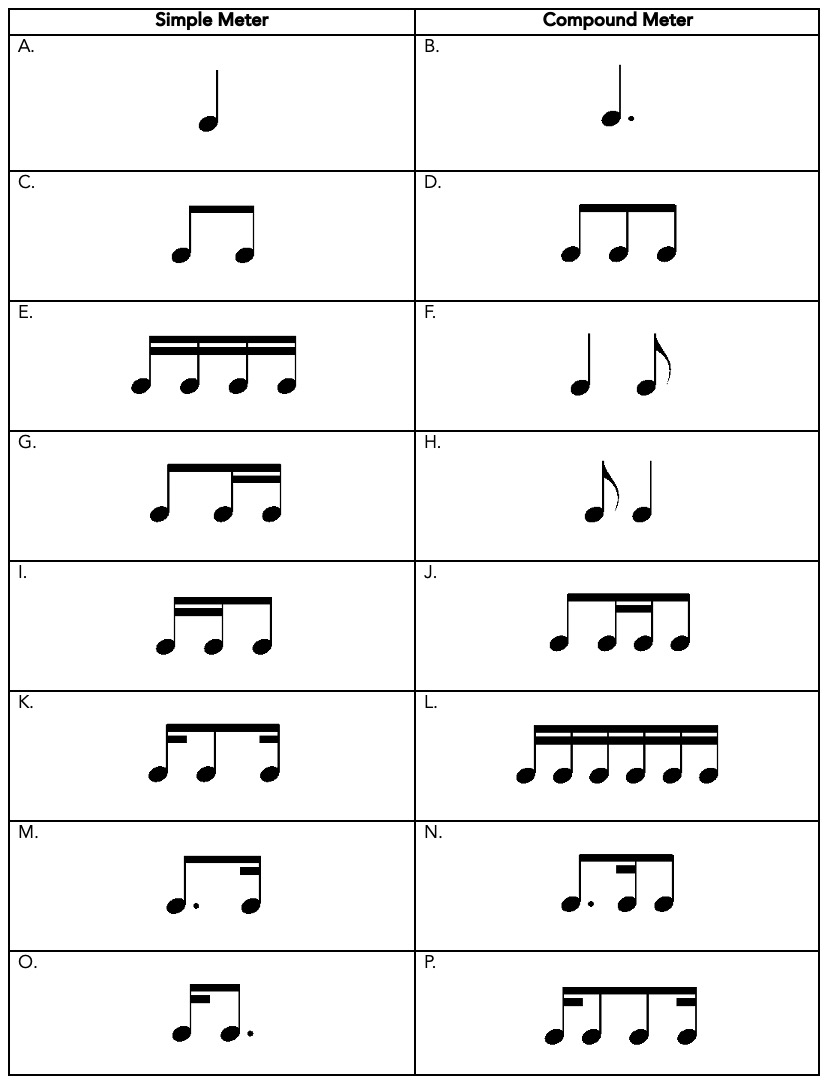Chapter 22: Asymmetrical Meters
About This Chapter
About This Chapter: So far, each example we’ve seen has either been in simple meter (with the beat dividing into two equal parts) or compound meter (with the beat dividing into three equal parts). In this chapter, we’ll explore asymmetrical meters (also sometimes called irregular meters), in which some beats divide into two equal parts but others divide into three equal parts. In the example below, each measure has three beats: one of the beats is drawn from compound meter and contains three eighth notes, while the other two are drawn from simple meter and contain only two eighth notes. That means one beat is longer than the other two. Make sure you keep the eighth-note pulse steady throughout—it may help to tap along with the eighth-note pulse or even set a metronome to it as you get accustomed to having different sizes of beats. (You may recall that we have encountered examples with different sizes of beats before, back in the meter-changing examples of Chapter 18 in which the division stayed constant. Now those different sizes of beats occur within each measure.)
Notation: There are several ways of notating asymmetrical meters and their time signatures. The beaming is an important way to show the grouping of the divisions into beats. For example, in the 7/8 example above, the beaming shows us when the eighth-note divisions are grouped into 3 + 2 + 2 (measure 1) or 2 + 3 + 2 (measure 2) or 2 + 2 + 3 (measure 3). This helps the performer quickly see which beats are simple and which are compound.
The following example shows some other notational options. In the first measure, the beaming shows the grouping of the 10/8 time signature into 3+3+2+2. In the second measure, the grouping is made even more explicit by the “(3+3+2+2)” indication above the staff. In the third measure, the grouping is actually incorporated into the time signature (this type of time signature is sometimes referred to as “complex meter”).
Rhythmic Syllables: For asymmetrical meters, it’s important to remember that some beats draw from simple meter and others draw from compound meter. Before you perform an example, figure out which beats are which—the simple meter ones will use simple meter syllables and the compound meter ones will use compound meter syllables.
The following example is in 8/8, an asymmetrical triple meter. The way that it’s beamed shows that the first two beats are longer (they each fit three eighth notes’ worth of time) while the third beat is shorter (it only fits two eighth notes’ worth of time). Thus, we use compound meter syllables (“2 la li,” “1 ta la ta li ta,” etc.) for beats 1 and 2, but simple meter syllables (“3 &,” “3 e & a,” etc.) for beat 3. Before you perform an asymmetrical meter example, take some time to analyze how many beats are in the meter, which ones are simple and which are compound, and what syllables you’ll need to use for each beat.
Section A—Asymmetrical meters with eighth-note rhythms
Practice
Practice A:
 Practice by performing along with this audio file, which features a metronome click and the notated rhythm. You will hear one measure of wood block to establish the tempo before the exercise begins.
Practice by performing along with this audio file, which features a metronome click and the notated rhythm. You will hear one measure of wood block to establish the tempo before the exercise begins.
Audio practice example coming soon!
Next, try performing along with this audio file, which features the notated rhythm but no metronome click. You will hear one measure of wood block to establish the tempo before the exercise begins.
Audio practice example coming soon!
1.
2.
3.
4.
5.
6.
7.
8.
9.
10.
11.
12.
13.
Section B—Asymmetrical meters with sixteenth-note rhythms
14.
15.
16.
17.
18.
19.
20.
21.
22.
23.
24.
25.
26.
27.
28.
29.
30.
31.
Section C—Asymmetrical meters with triplets and duplets
32.
33.
34.
35.
36.
37.
38.
39.
40.
41.
42.
Section D—Two-part rhythms in asymmetrical meters
43.
44.
45.
46.
47.
48.
49.
50.
51.
52.
Section E—Changing and asymmetrical meters
53.
54.
55.
56.
57.
58.
59.
60.
Section F—Two-part rhythms featuring changing and asymmetrical meters
61.
62.
63.
64.
Rhythmic Cells
- For general suggestions on how to use these rhythmic cells, see Appendix: How to Use Rhythmic Cells.
- The left column features beats of simple meter, while the right column features beats of compound meter. Combine beats from each of the columns together to create an asymmetrical meter, such as 5/8, 7/8, 10/8, and more.
Rhythm in Context
Rhythm in Context example coming soon!
Citations
Poem:
- Phyllis Wheatley (1753–1784), “A Hymn to Humanity,” public domain. From Poems on Various Subjects, Religious and Moral, published 1773, by A. Bell Bookseller, Aldgate, London.
Psalm:
- Scripture taken from the KJV, 1987, public domain.
Rhythm in Context:








